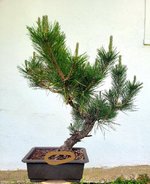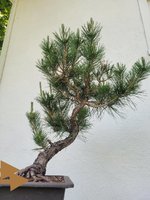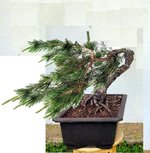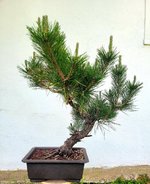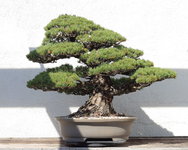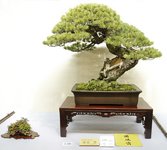Lazylightningny
Masterpiece
Hi everyone. Up for your consideration is this Japanese black pine I picked up this January 2021. Per the seller, it has been in this pot for 2-3 years, and all I have done so far is water and fertilize it. This is my first JBP. I've been paying attention to the pine gurus here on Bonsai Nut for years, as well as learning from Peter Warren and as a member of Bjorn's Bonsai-U. So, I have some idea of what to do, but no hands-on experience yet.
I don't necessarily have any solid design ideas yet. I'll prune as needed and see what develops. I would appreciate input from those who have experience. You know who you are.
First of all, is it healthy enough yet to start work? Naturally, of primary importance is the health of the tree.
What I was thinking of doing was pruning back to birurcations, and letting the remaining candles develop this year to strengthen the tree. I'll show some pics below. But of course I'm open to suggestions.
Here is the tree, rotated 360 degrees:
Number 1, trunk and top both lean away from the viewer
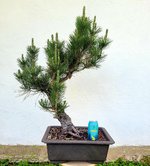
Number 2, base leans away from the viewer, top leans toward the viewer
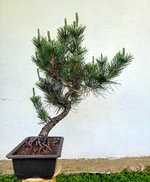
Number 3,trunk and top both lean toward the viewer
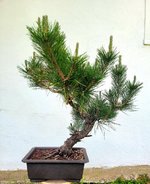
And number 4, top leans completely away from the viewer
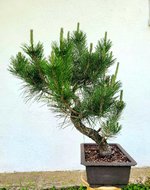
Here's a view from underneath the canopy:
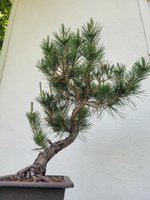
The twigs I was considering pruning off were ones like this... ones that had multiple new shoots at their bases:
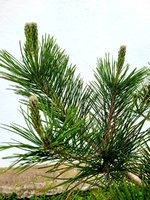
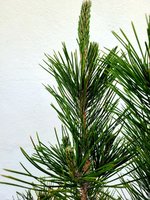
Let me know what you think. I look forward to hearing your suggestions!
I don't necessarily have any solid design ideas yet. I'll prune as needed and see what develops. I would appreciate input from those who have experience. You know who you are.
First of all, is it healthy enough yet to start work? Naturally, of primary importance is the health of the tree.
What I was thinking of doing was pruning back to birurcations, and letting the remaining candles develop this year to strengthen the tree. I'll show some pics below. But of course I'm open to suggestions.
Here is the tree, rotated 360 degrees:
Number 1, trunk and top both lean away from the viewer

Number 2, base leans away from the viewer, top leans toward the viewer

Number 3,trunk and top both lean toward the viewer

And number 4, top leans completely away from the viewer

Here's a view from underneath the canopy:

The twigs I was considering pruning off were ones like this... ones that had multiple new shoots at their bases:


Let me know what you think. I look forward to hearing your suggestions!

